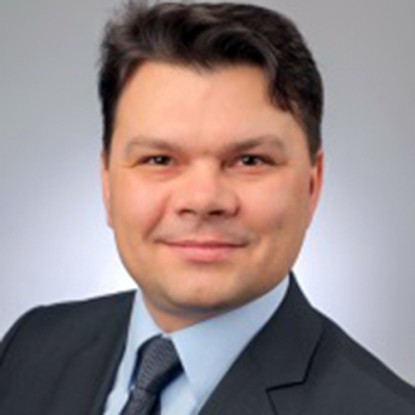Team
| Name | Contact | |
|---|---|---|

Picture: KIT
| PD Dr. Viatcheslav Bykov | viatcheslav.bykov@kit.edu +49 721 608-48746 |

| Prof. Dr. rer. nat. habil. Ulrich Maas | ulrich.maas@kit.edu +49 721 608-43930 |

| Sudhi Shashidharan | sudhi.shashidharan@kit.edu |
Motivation
Selective catalytic reduction (SCR) using urea-water solution is a process to reduce the emission of nitrogen oxides in combustion engines, whose relevance in the automotive sector has strongly increased during the last years. The underlying physical-chemical processes, especially concerning the formation of solid residuals, are not yet understood in detail. These processes include a multitude of potentially coupled physical processes like diffusion, and convection in both liquid and gas phase, evaporation and chemical reactions. For this reason, detailed simulations of the complete SCR process are very complex and the computational requirements are high. To reduce the complexity and computational costs of such simulations, there is a need for efficient and accurate reduced models which can describe the detailed chemical processes as well as the multiphase flow.
Objectives
The objective of this subproject is the development of reduced kinetic models for urea and its decomposition products. These are required to reliably and efficiently describe the complex chemical kinetics in large eddy simulations (LES) of the processes in the exhaust gas system. For this purpose, detailed reaction mechanisms for the model system are analysed and reduced by using mathematically rigorous reduction concepts. Reactions occurring in all phases (gas, liquid, solid) and phase-changes will be considered. Furthermore, in the reduced model the coupling with flow and transport-processes will be accounted for. The implementation strategy of the reduced mechanism into the LES of the complete model will also be developed.
Previous Findings
It was found that the evaporation of a droplet of urea-water solution can be separated into two main phases of water evaporation and urea decomposition. The time-scales of the following gas phase chemistry between NOx and the gaseous decomposition products are much larger than the time-scales of the evaporation of a droplet. As a result, the gas-phase chemistry can be treated completely uncoupled from the evaporation. Based on this finding, several reduced models were developed to either describe the slow decoupled gas-phase chemistry or the detailed processes close to the droplet including transport. In addition, a simple model to describe the evaporation rate of droplets using polynomials was developed.
Approach
An evaporating and decomposing drop or film of urea-water solution is used as a model system. The internally developed program package INSFLA is used which allows detailed 1D simulations of evaporation and chemical reactions in the gas and liquid phase. Solid residuals will be considered as part of the liquid phase with adapted properties.
The computed time and space-dependent temperature and concentration profiles are then analyzed based on different reduction concepts. If for the investigated system the transport processes only cause a perturbation of the kinetics, the reduction concepts based on time scale separation local, e.g. ILDM (intrinsic low-dimensional manifolds) or global e.g. GQL (global quasi-linearization), will be used. If they directly couple with the chemical kinetics, which is likely for heterogeneous reactions in a film, the REDIM (reaction-diffusion manifolds) concept will be used. A comparison of the respective time scales allows an estimation to which extent a separation of the time scales exists. To incorporate heterogeneous processes into the REDIM concept, the boundary conditions for the REDIM equations have to be modified and different phases of the same species considered as different species.
Current Work
The main objective is the implementation of liquid and solid chemistry and the corresponding phase changes as well as the extension for surface films into the detailed simulations and the reduced models. This requires further development of the reduced models and their boundary conditions which currently only handle gas phase reactions and, in the case of REDIM, transport phenomena. Furthermore, the influence of convection is expected to be much higher for a film compared to a small droplet, which will also be considered.
Cooperation
The chemical mechanisms which will be reduced in this subproject are developed in sub-projects B04 and B05, while C04 provides experimental reference data and boundary conditions. Further improvement of the reduced models is performed in cooperation with the corresponding subproject (B06) for model reduction of in-engine combustion processes. The resulting reduced models for chemistry and other physical processes are then used in simulation of the exhaust gas system (C05, B01).





